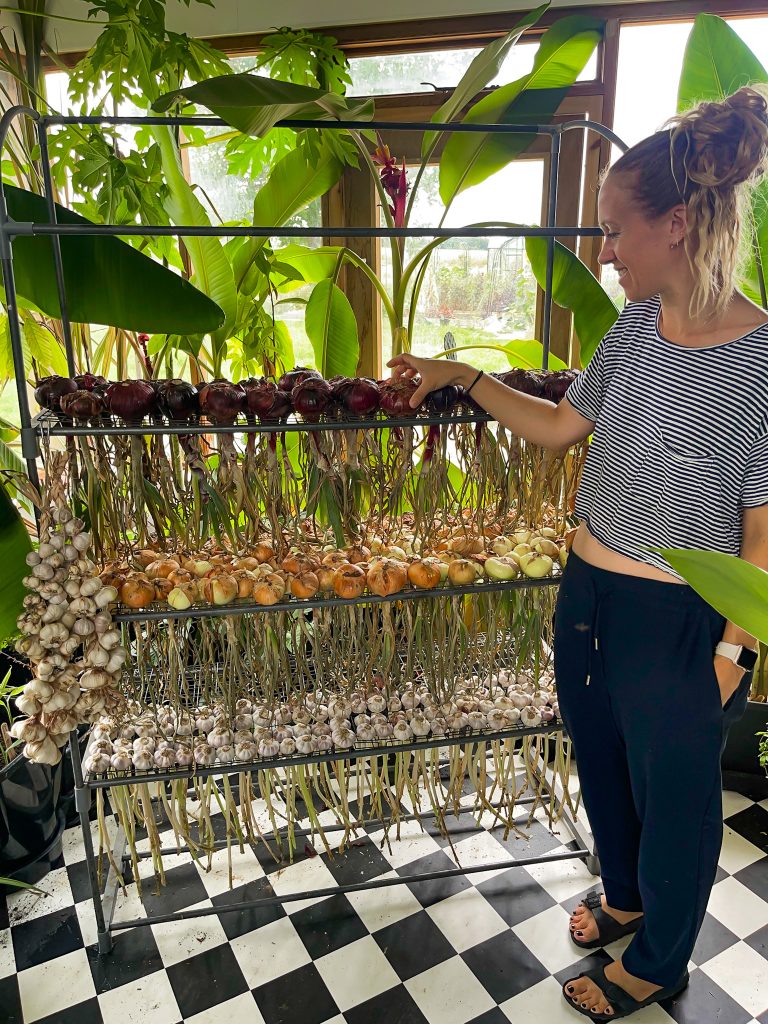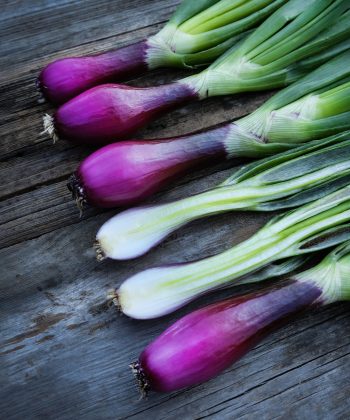Growing Advice
How to Grow Onions from Seed
Onions are a staple in many dishes, and growing them from seed can be a rewarding and cost-effective way to ensure a fresh supply in your kitchen. So many people grow from onion sets, but growing from seed is just as rewarding and saves you a lot of money. Whether you’re a seasoned gardener or a novice, this guide will walk you through the process of growing onions from seed in the UK climate.
Jump to a topic:
Choosing the Right Varieties
Before you start growing onions from seed, it’s essential to choose the right varieties for your garden and culinary preferences. At She Grows Veg, we love a perennial onion. They give and give! Alternatively, try different varieties so that you can develop a preference depending on which dishes you want to cook.
Sowing Your Seeds
Start your onion seeds indoors in late winter or early spring, typically around February or March, depending on which part of the UK you’re based in – the latter if your conditions are colder. Fill seed trays or small pots with quality, peat-free compost, then sow the seeds thinly and cover them lightly with soil. Water gently, ensuring the soil stays moist but not waterlogged.

Transplanting Seedlings
Once the seedlings have grown to around 10 cm tall and have developed a few sets of leaves, they are ready to be transplanted into the garden. Choose a sunny, well-drained spot with fertile soil for planting. Prepare the soil by adding compost or well-rotted manure to improve fertility.
Spacing and Planting
Onions require adequate spacing to develop healthy bulbs, so plant them approximately 4-6 inches apart in rows spaced 12-18 inches apart. Gently tease the seedlings apart, being careful not to damage the delicate roots, and plant them at the same depth as they were in the seed trays.
Care and Maintenance
Keep the soil consistently moist, especially during dry spells, but avoid overwatering, as this can lead to rot. Mulch around the plants to help retain moisture and suppress weeds. Onions have shallow roots, so be careful when weeding to avoid damaging them.

Feeding
Onions are heavy feeders and will benefit from regular feeding with an organic feed product throughout the growing season. Apply feed or side dress with compost every few weeks to provide essential nutrients for bulb development.
Pest and Disease Management
Keep an eye out for common pests such as onion flies and onion thrips, which can damage the foliage and bulbs. Companion planting with herbs like mint and chives can help deter pests. Proper crop rotation and good garden hygiene can also reduce the risk of disease.

Harvesting
Onions are typically ready for harvest in late summer or early autumn, around August to September in the UK. When the tops start to turn yellow and fall over, gently lift the bulbs from the soil and lay them out to dry in a warm, well-ventilated area for a few weeks.
Storage
Once the onions have dried completely, trim the tops and roots, leaving a few inches of stem attached. Store the onions in a cool, dry place with good air circulation, such as a garage or shed. Properly cured onions can last several months in storage, providing you with a steady supply until the next growing season.

Growing onions from seed in the UK is a straightforward process that can yield a bountiful harvest with proper care and attention. By following these steps and tips, you can enjoy homegrown onions that are fresh, flavourful, and free from harmful chemicals. Happy gardening!









